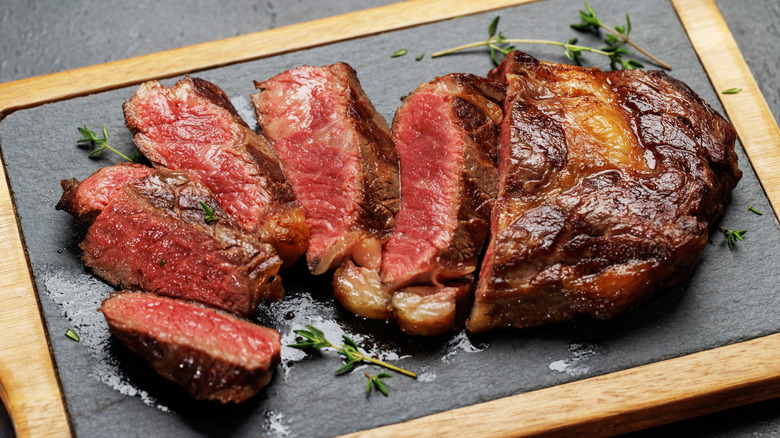Keep Steak Shrinkage In Mind When Deciding How Much You Need
It turns out Jerry Seinfeld's buddy George Costanza wasn't the only one concerned about shrinkage. It's something every cook should think about when making steak since every piece of meat shrinks at least 25% and up to 30% after cooking. This is especially important when cooking for a group: You don't want to end up purchasing what you thought was enough meat for your guests only to realize you have 25% less when it comes out of the oven.
Meat reduces in size when cooking for several reasons. For one, heat causes the protein in the meat to coagulate and contract. Heat also melts away the fat and evaporates the juices. This is helpful to know when shopping: The meatier, juicier, and fattier the cut of steak you're cooking, the more it will shrink when cooking. Also keep in mind that meat loses moisture when it is cooked at high temperatures – another factor in shrinkage.
Avoid shrinkage by retaining the juices
To limit the amount of shrinkage in meat once you're cooking, you want to do as much as possible to retain the juices. Using an acid-based steak marinade will help break down the protein in the beef before you cook it, while also adding moisture back into the meat. After that, you can retain the juices by using a moist cooking method like braising, poaching, or stewing. Letting the meat rest after cooking — five to 10 minutes for smaller cuts and 15 to 20 for roasts and other large cuts — prevents its juices, which rise to the surface during cooking, from releasing onto the cutting board. The juices instead flow back into the meat.
The low-and-slow cooking method for steaks used by José Andrés is another way to keep steaks moist, tender, and juicy. Cooking a steak between 250 and 275 degrees Fahrenheit can significantly reduce the amount of shrinkage that occurs; for some steaks, that might be a shrinkage of under 10%. Follow these tips, and you won't have to worry about having enough to feed your guests.

